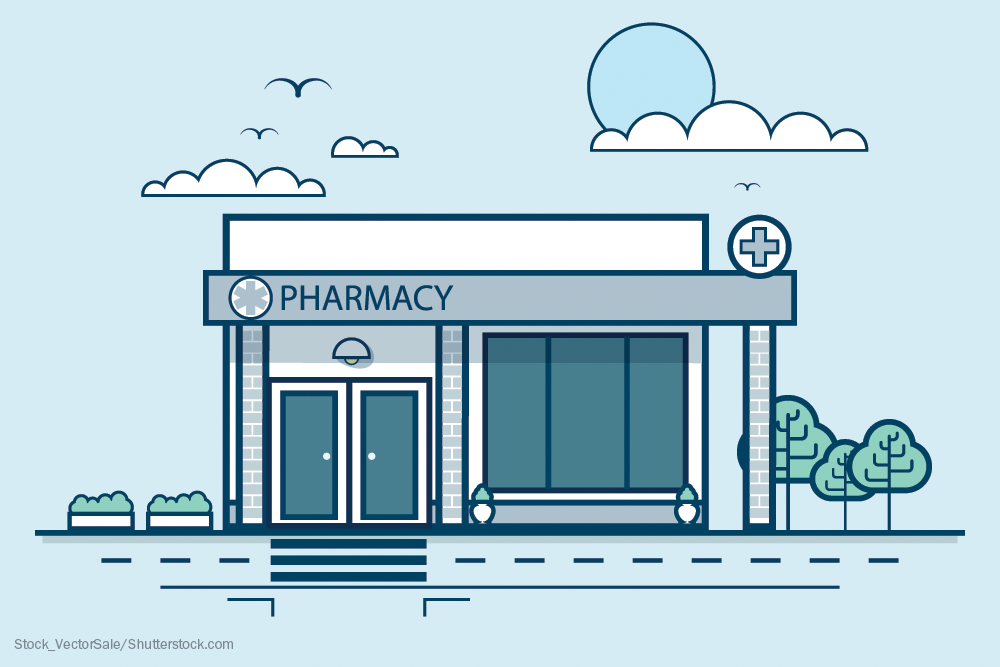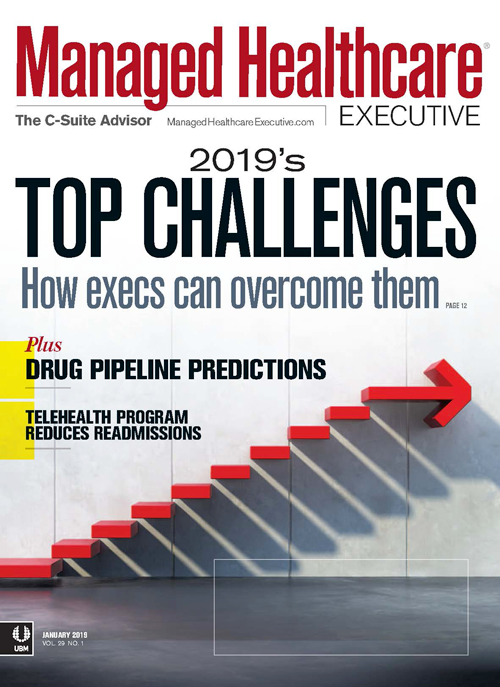Top 6 Pharmacy Challenges of 2019
What experts say will be the year’s biggest problems, and what can be done about them.

While pharmacy assumes different challenges every year, affordability has stayed at the top of the list. Last year, non-adherence and pharmacist compensation capped off the top three, but in 2019, industry experts are identifying new barriers that have even more impact.
The FDA approved 55 drugs as of early December 2018, in therapeutic areas as diverse as influenza, breast cancer, immunodeficiency, pneumonia, and migraines. That is nine more than record-breaking 2017, which had the highest number of approvals in more than two decades, according to an April 12, 2018 Health Policy Report in the New England Journal of Medicine.
Here are the six top pharmacy challenges health executives can expect in 2019:
Affordability
Similar to last year, specialty drugs are hiking up the cost of pharmacy. “Innovation with gene therapies and precision medicine increases the fight to afford specialty drugs,” says Susan A. Cantrell, RPh, CEO, Academy of Managed Care Pharmacy (AMCP).
In 2016, the United States spent 18% of gross domestic product on healthcare-nearly twice the rate of 10 other high-income countries, according to a study in the Journal of the American Medical Association. This country also claims the highest pharmaceutical spending among its peers.
Although Steve Lucio, associate vice president, Vizient, a performance improvement company located in Irving, Texas, recognizes the effectiveness of specialty drugs, such as those for immunotherapy, he says they can saddle patients with high costs. He also believes that patients have to weigh a drug’s relative value against its price tag.
“The challenge of high costs is lessened if you have control of your healthcare budget and access to drugs,” Lucio says.
“Drugs are eating up more and more of the healthcare pie,” says Jane Lutz, executive director, Pharmacy Benefit Management Institute (PBMI). “Pharmacy is the most frequently-used benefit, and it’s a real-time benefit-you know what you are going to pay when you pick up a prescription.”
She is concerned that the price of drugs is outweighing income when the average annual cost of a specialty drug is $52,000 and the median wage in 2016 in this country was $48,665.
Lucio is looking forward to potential biosimilars-especially in oncology-entering the marketplace in 2019 to help mitigate costs through competition.
On the other hand, Lutz believes that no model exists that can support the development and distribution of orphan and genomic drugs and biosimilars.
Jonathan Gavras, MD, senior vice president and chief medical officer of Prime Therapeutics, a PBM headquartered in Eagan, Minnesota, believes it is important to anticipate what’s coming down the pipeline, especially high-cost specialty drugs; develop appropriate policies around cost to be affordable for payers and patients; and keep ahead of drug approvals, many of which are fast tracked.
As a solution, he recommends developing a strong, proactive pipeline management system anticipating costs and ensuring the right indication, right drug, and right person are aligned.
“Negotiating for best drug price shouldn’t present a barricade,” Gavras says. “We need to change reimbursement to a value-based model; manage outcomes and patients; and tie reimbursement to outcomes to prevent adverse effects and hospitalization and increase survival.”
Multiple prescriptions also add to the cost of drugs for individuals. As many as 57% of U.S. adults have less than $1,000 in savings to cover health expenses, and nearly 25% have less than $100, according to PBMI. On the positive side, about 85% of people with commercial insurance pay less than $20 a month out of pocket.
Opioid crisis
“Solving this problem takes a multistakeholder approach; it is important to manage utilization without compromising care,” Cantrell says. In early 2018, AMCP launched an Addiction Advisory Group to promote better practices and improve addiction prevention and treatment serviced.
Fred Massoomi, PharmD, senior director, Visante Inc., a medication management consulting company headquartered in St. Paul, Minnesota, agrees with Cantrell that the epidemic is a multifactorial problem, placing blame on the inability to accurately document doses and dispose of waste.
Gavras says that Prime Therapeutics has been identifying high prescribers since 2010, along with users abusing opioids based on a predictive modeling process. The PBM also works with providers to manage therapy and with retailers to prevent patients from filling the same prescription in multiple pharmacies.
In addition, the PBM developed a built-in fraud use system and has created an Opioid Safety Guide on safety storage, disposal of opioids, and overdose prevention, which Walgreens pharmacists provide to Florida Blue members. The intervention resulted in a four-fold increase in members receiving naloxone, an overdose reversal agent.
Separation of medical/pharmacy benefits
“Today’s healthcare system is highly complex and segmented, especially in how medications and other aspects of care are paid for. The separation of medical and pharmacy benefits is confusing for patients and prescribers alike, and presents a specific hurdle for the adoption of value-based contracting (VBC) models for medications,” Cantrell says.
“Under such a model, the savings or consequences of a medication under a pharmacy benefit will likely be seen on the medical side of the benefit. But capturing and recording that event in the pharmacy benefit, which is needed to execute the VBC model, is hampered by the segmentation of the two benefits. In other words, those responsible for managing the pharmacy benefit may not have access to medical data,” she says.
Take a look back: The top three pharmacy challenges of 2018
“Specialty medications are responsible for churn and volatility because they can be covered under both medical or pharmacy benefits but require a high-touch model because of side effects, changes in dosages, and comorbidities. It is up to PBMs and plans to decide which benefit should cover specialty,” Lutz says.
Gavras emphasizes the need to look at the total cost of drugs, not just the pharmacy benefit, especially because many specialty drugs fall under the medical benefit and never touch the pharmacy benefit; “However, no matter which benefit, these drugs affect healthcare delivery and produce the same cost impact,” he says.
Drug shortages
Shortages of some drugs have also presented a challenge to the industry-something Lucio partially attributes to natural disasters such as Hurricane Maria in Puerto Rico, and to low margins on certain drugs which force manufacturers to stop production. “Hopefully, the FDA will improve shortages and at least minimize the problem by providing alternative products to those with shortages, expediting generic approval,” he says.
According to the FDA, shortages decreased to 39 in 2017 from a peak of 251 in 2011. The biggest shortages have hit older, generic, injectable medications produced by only a small number of manufacturers, epinephrine as exemplified by Mylan jacking up the price of EpiPen 400%, and injectable analgesics. The FDA approved the first generic competitor to EpiPen in August 2018 made by Teva Pharmaceuticals.
Massoomi calls drug shortages the “silent epidemic.”
Multitude of regulations
Some of the strictest regulations to recently surface relate to compounding drugs: USP 795, 797, and 800, which are standards for compounding non-sterile preparations, compounding for sterile preparations, and hazardous drug handling, respectively.
“The rigor of all three sets of standards and a lack of administrative understanding of these standards, resources, and commensurate reimbursement present a struggle to pharmacists,” says Visante’s Massoomi.
“Administrators do not fully appreciate the complexity of these standards or the need for constant monitoring,” he says, leading to his recommendations to hire a compliance expert and develop a compliance policy with living documents to support each product and environment.
Technology
Lucio makes technology sound like a necessary evil when he says it is expensive but enables the pharmacy industry to work more safely and effectively.
“We want pharmacists to operate a patient-safe environment, but a business model doesn’t exist to enable that but with so many products and technologies that can cause problems,” says Norman Tomaka, BS, Pharm, MS, clinical consulting pharmacist based in Melbourne, Florida.
Related article: Three Pharmacy Regulations Health Execs Should Watch
“We need to focus more on technology and be more vigilant of errors that can occur and overzealous about new drugs because not a lot of written information is available,” he says.
Lutz is all for technology, considering it to be a critical part of the solution of keeping drug costs down-especially the use of online tools. “Technology can help us make informed decisions by using data analytics, enhance reporting and provide better access to data, helping us put the best programs into place,” she says.
Mari Edlin, a frequent contributor to Managed Healthcare Executive, is based in Sonoma, California.

David Calabrese of OptumRx Talks New Role, Market Insulin Prices and Other Topics 'On His Mind'
April 13th 2023In this month’s episode of the "What's On Your Mind podcast," Peter Wehrwein, managing editor of MHE connects with the now Chief Clinical Officer of OptumRx Integrated Pharmacies, David Calabrese. In this conversation, David touches on his transition in January as OptumRx’s former chief pharmacy officer and market president of health plans and PBMs to his new role as Chief Clinical Officer where he now focuses more on things such as specialty pharmacy to home delivery — with an overall goal of creating whole-patient care. Throughout the conversation, Calabrese also touched on the market’s hot topic of insulin prices and behavioral health services within the OptumRx community, among other topics.
Listen
Upended: Can PBM Transparency Succeed?
March 6th 2024Simmering tensions in the pharmacy benefit management (PBM) industry have turned into fault lines. The PBMs challenging the "big three" have formed a trade association. Purchaser coalitions want change. The head of the industry's trade group says inherent marketplace friction has spilled over into political friction.
Read More
Briana Contreras, editor of Managed Healthcare Executive, spoke with Nancy Lurker, CEO and president of EyePoint Pharmaceuticals. Nancy shared a bit about EyePoint and how the organization’s innovative therapies are addressing patient needs through eye care, and most importantly, she addressed C-Suite positions like the CEO role. Nancy shared advice for those seeking to reach the CEO level, especially toward women in healthcare and other roles, and what it takes to run a biopharma company.
Listen
The deliberate disconnection of Change Healthcare to ring fence a cyberattack entered its seventh day today. Prescribers are finding ways to get pharmacy claims processed, and UnitedHealth Group says disruption to the dispensing of prescriptions has been minimal. But independent pharmacies want more information and protection from financial consequences from pharmacy benefit managers.
Read More